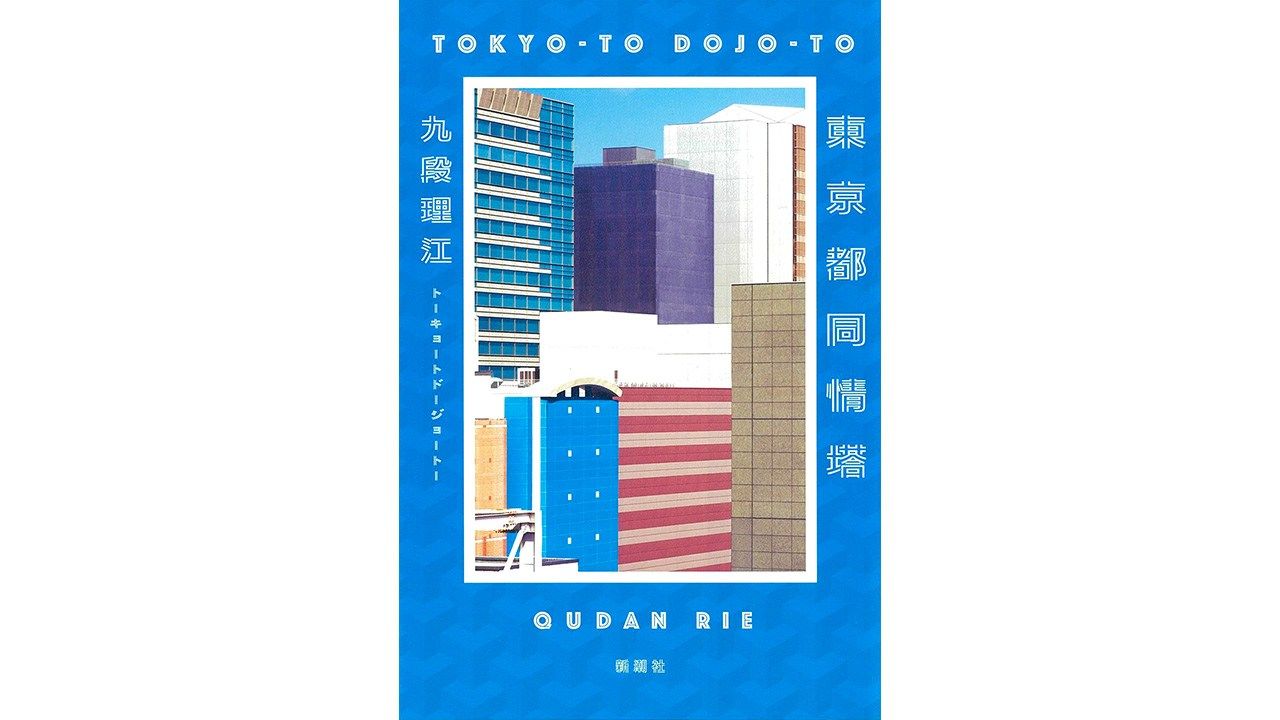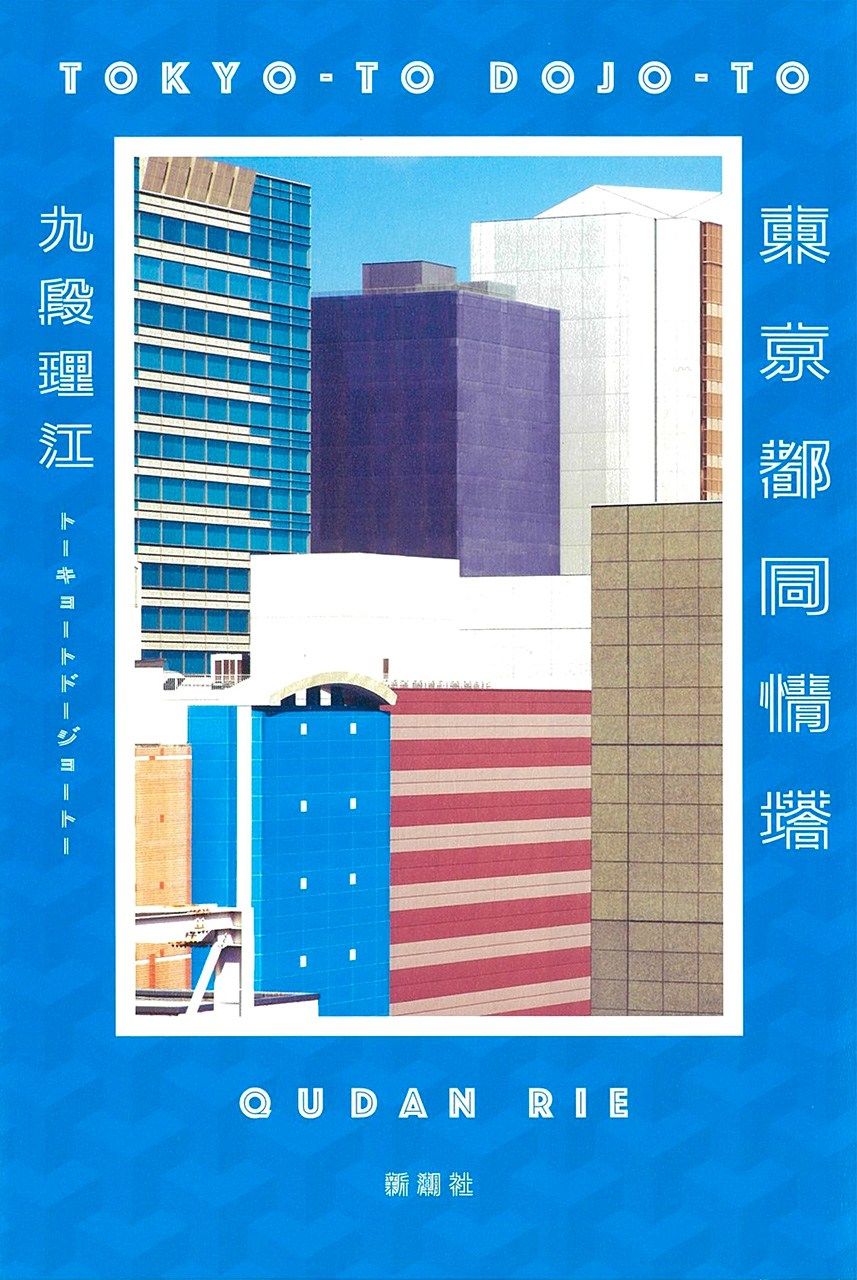
“Tokyo Sympathy Tower”: Building a New Babel
Books Society Technology Architecture- English
- 日本語
- 简体字
- 繁體字
- Français
- Español
- العربية
- Русский
High-Rise Prison
In 2020, the Tokyo Olympics are forced through amid the COVID-19 pandemic. Despite criticism of ballooning construction fees, the New National Stadium is built according to architect Zaha Hadid’s design. Some years later, plans are made to build a high-rise prison in the grounds of the neighboring Shinjuku Gyoen garden. This is the set-up for Qudan Rie’s Tōkyō to dōjōtō (Tokyo Sympathy Tower). (Incidentally, in the real world, the Olympics were postponed until 2021, and Hadid’s design was replaced by one by Kuma Kengo).
The protagonist Makina Sara admires Hadid’s great streamlined creation, and believes that it could never become a negative legacy of the Olympics because “It’s so overwhelmingly beautiful.” Having achieved fame at the age of 37, she sets to work designing the new prison. In a flash of inspiration, she comes up with the name, “Sympathy Tower, Tokyo.”
The novel begins as follows:
The Tower of Babel re-created. The construction of Sympathy Tower, Tokyo, will throw our language into disorder and break up the world.
Abandoning Japanese
While the story takes place in the near future of an imagined setting, it raises a number of questions, concerning language especially. Sara believes that “Japanese people want to abandon the Japanese language.” She dislikes the use of katakana loanwords to replace existing Japanese words.
Her secretary advises her to use the loanword for “architects” in the company name rather than a more traditionally Japanese name, as this will be better for international competition. Once she wrote the Japanese zenseibetsu toire for gender-neutral toilets in the design for a hall, but this was corrected to jendāresu toire (genderless toilets). Listing various loanwords in her head, such as those taken from “single mother,” “partner,” and “nonbinary,” she thinks:
Switching to foreign loanwords . . . is sometimes done to avoid a sense of inequality or discriminatory expressions, and then because the words come across as mild or euphemistic, perhaps they’re less likely to cause offense, at least as a gut feeling. When they’re unsure what to do, people reach straight for a foreign word. And it’s funny how often this settles everything.
With the use of katakana loanwords, the inherent meaning of the Japanese becomes ambiguous. Yet, for her name Sympathy Tower, Tokyo, Sara decides to go with the fashion of the times and use katakana.
Criminals as Victims
The story progresses through the monologues of its protagonist, but there is another important character: Tōjō Takuto, a man 15 years younger than her, whom she is dating. He is an attractive assistant at a high-class Omotesandō boutique. Drawn by his appearance in the window, “shapelier than a mannequin,” Sara enters the establishment instinctively and strikes up a conversation. While she would like a deep relationship, her tendency to quibble prevents it from advancing.
In the middle stages of the novel, Sara is viewed from Takuto’s perspective. He describes her katakana name Sympathy Tower, Tokyo, (Shinpashī tawā Tōkyō) as “hideously lame,” suggesting instead a euphonious combination of kanji (東京都同情塔; Tōkyō to dōjōtō), which means the same thing. Takuto himself shows sympathy to Sara, a garrulous critic of other people’s actions, who he can only view as a poor, pitiable woman. For him, the tower appears to be an expensive, meaningless lump of concrete. The couple’s interactions draw readers’ interest about how their relationship will develop.
In the author’s imaginary Japan, society is generous toward criminals. In fact, rather than being called “criminals,” the prisoners in the tower are known as Homo miserabilis. This is a keyword in the story. They are seen as having committed crimes due to the environment in which they were born and raised, and therefore victims, deserving of sympathy.
This view was popularized by a “scholar of happiness” called Maseki Seto, who advocates tackling prejudice against criminals initially through language and envisions the construction of the tower. Here, they will be treated equally as victims, and are promised comfortable lives.
Thoughts on AI
The book drew media attention after Qudan stated at the Akutagawa Prize ceremony that she wrote 5% of the book using generative AI. Due to the possibility of misunderstanding, she gave a later explanation in the March edition of the Bungei Shunjū magazine.
In scenes in the novel where generative AI appears, there was a necessity for using an AI’s words, and I think it produced a really good effect. However, the idea for the novel, the prose and dialogues in sections without AI, and the characterization of the people whose words and thoughts are being encroached upon by AI are all original.
In the novel, Sara asks questions of generative AI via computer. These are the scenes where Qudan herself used AI. The author said, “I hope people enjoy the book, including deciding where AI was used,” but Sara’s views on AI are as follows.
I hate his kind of mansplaining, where he starts explaining things I haven’t even asked. . . No matter how much ability he has to learn, he doesn’t have the strength to face his own weaknesses. He’s so used to getting away with stealing words, he neither doubts nor is ashamed of his ignorance.
One imagines that the author thinks the same; her use of generative AI in a novel to raise such issues is original.
Utopia or Dystopia?
The tower is completed in 2030 as a great 71-story pillar. The top story has an amazing view, and it is possible to see the lives of all the people down below. Prisoners wear whatever clothes they like, spending their time freely drinking coffee while reading or watching DVDs. Everyone is equal, and men and women live together.
As one might expect, there are protests against such preferential treatment for brutal criminals, and even a bomb threat. As the designer, Sara comes under attack on social media, with knock-on effects in her professional life.
Is this near future a utopia or dystopia? It should be enough if I say that it has a taste of George Orwell’s Nineteen Eighty-Four or Tawada Yōko’s Kentōshi and Chikyū ni chiribamerarete (trans. by Margaret Mitsutani as The Emissary and Scattered All Over the Earth, respectively).
(Originally published in Japanese.)
